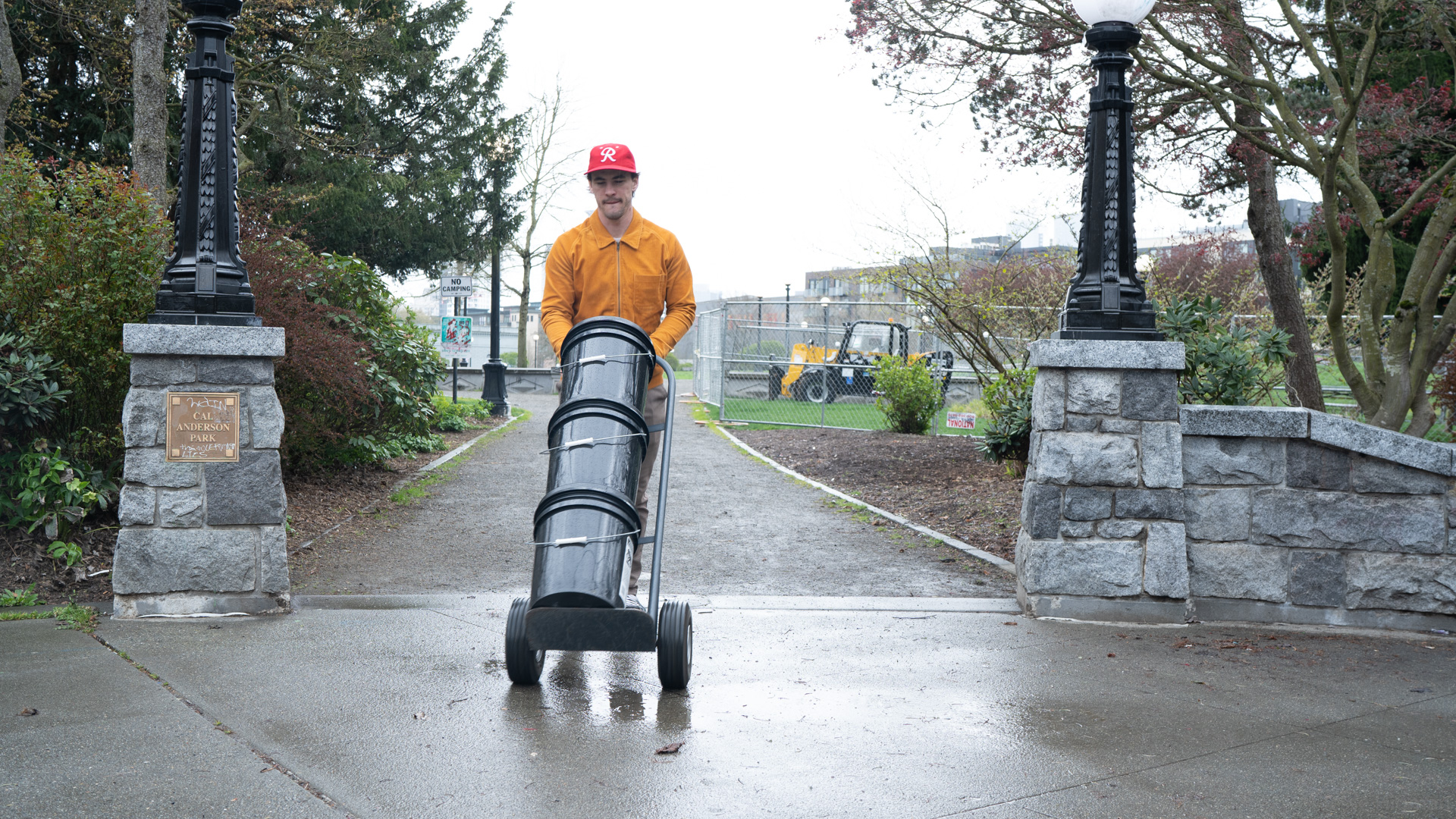Paint Water Disposal Plan:
The paints I use are from a company called Golden. They are water-based, non-toxic acrylics called Interference Fluids. Unlike traditional paints containing pigments, they consist of a transparent acrylic binder holding microscopic mica flakes. They produce an architectural color, refracting light at particular angles to produce their variety of iridescent colors.
I mix these Interference acrylics at a ratio of 2 teaspoons per cup of water. As a solution of mostly water, they appear milky white in a cup. The cups have to be labeled to identify them because the color only appears on a black canvas after it has been poured, at a certain angle of light refraction. From some perspectives there is no color, from another, a brilliant purple as the mica flakes lay at the proper angle to produce their effect.
Golden has been my favorite company for years, helping me to make custom mixes in their lab in upstate New York. They are also the only acrylic paint company to provide instructions on how to dispose of used paint water. A YouTube video by The Dotting Center of How To Dispose Of Acrylic Paint Waste Water also shows this process.
By chemically treating the contaminated water to cause the impurities to flocculate, aggregated solids can be filtered from the water.
Using a hand truck, we can transport three 5 gallon buckets of paint waste water out of the park at a time, with screw-on, water-tight tops.
On average, we produce 6 of these 5 gallon buckets of waste water during a 3 hour event. We do have room however, to pour 12 of these 5 gallon buckets into two, 30 gallon rain barrels. After the event, we remove the filtered residue and flush the cleaned water in my sewer.
For this process:
- We add 15 tablespoons (almost 1 cup) of Aluminum Sulfate to one 30 gallon barel of cloudy, paint waste water. We dissolve this material in a small jar before adding it to the waste water and stirring.
- Next, we stir in 18 Tablespoons + 2 teaspoons of powdered lime (Calcium Hydroxide) and watch as the flocculation of solids ocurrs, within a couple of minutes. A clear layer of water deepens quickly as the solids settle to the bottom, below the level of the spigots installed in the rain barrels.
- Using PH testing strips, we check the PH of the clear water, aiming for between 5 and 9. If it is lower, we adjust by adding lime. If higher, we add aluminum sulfate.
- Using two 5 gallon paint filters, each holding two 24” coffee filters, we drain the water from the rain barrels through the spigots after flocculation has occurred. This “clean” filtrate is flushed into my sewer and the solid, filtered residue, is disposed of in a licensed landfill.



